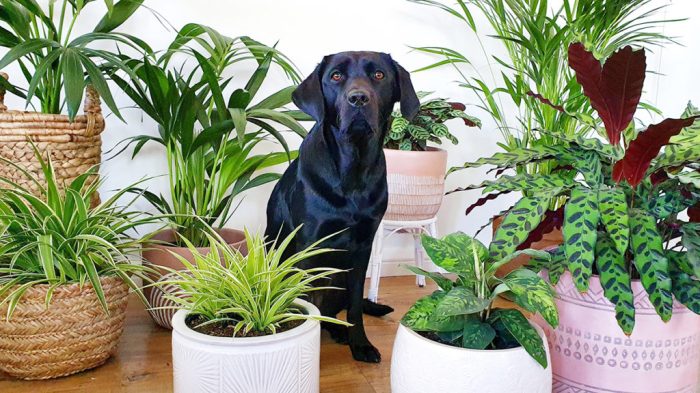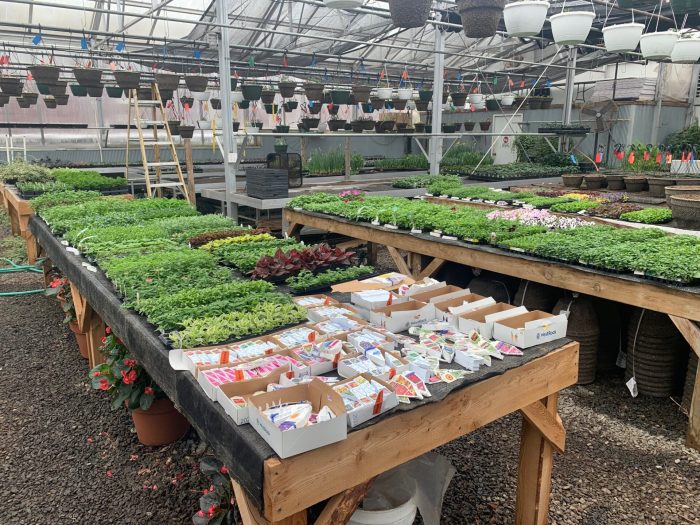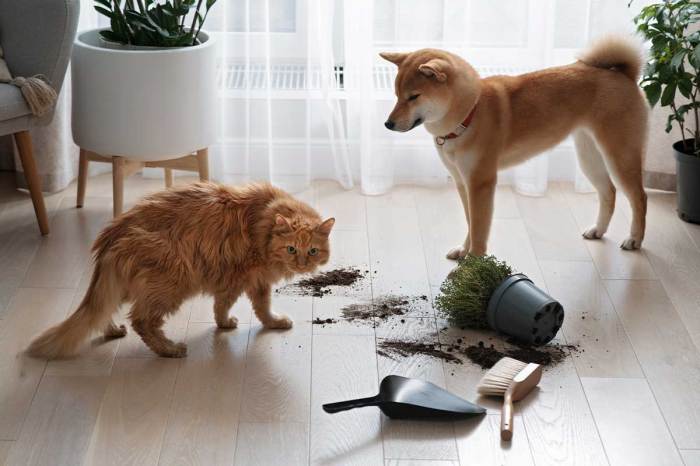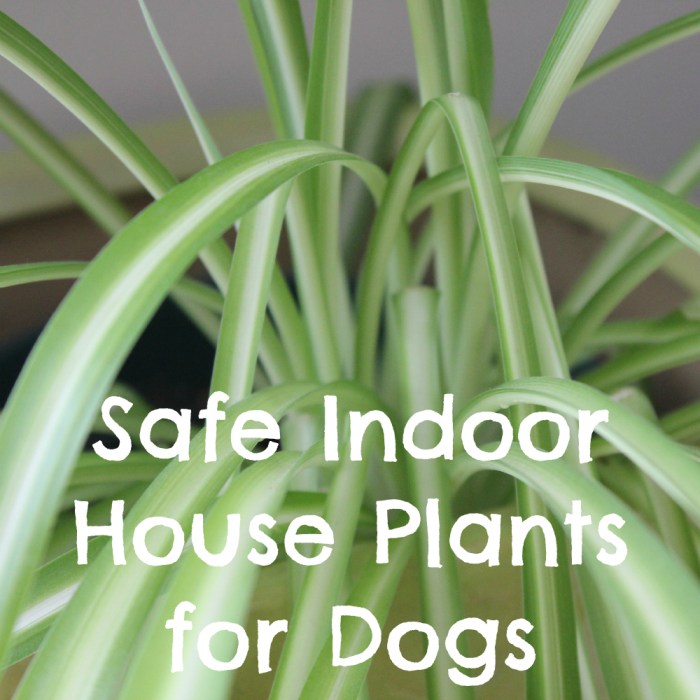Hanging plants dog safe, a topic that combines the joy of gardening with the well-being of our furry companions. Embark on a journey to discover the wonders of hanging plants that are not only visually appealing but also harmless to our beloved dogs.
From purifying the air to reducing stress levels, hanging plants offer a myriad of benefits for both humans and their canine friends. In this comprehensive guide, we will delve into the world of dog-safe hanging plants, providing you with the knowledge and inspiration to create a harmonious living space that caters to the needs of both you and your furry companion.
Identify Dog-Safe Hanging Plants

Hanging plants can add a touch of greenery and freshness to your home, but it’s important to choose plants that are safe for your furry friends. Some plants can be toxic to dogs, causing symptoms such as vomiting, diarrhea, and even seizures.
Here’s a list of hanging plants that are safe for dogs, along with their benefits:
Spider Plant
- Non-toxic to dogs and cats
- Purifies the air, removing toxins like formaldehyde and xylene
- Easy to care for, making them a great choice for busy pet owners
Boston Fern
- Non-toxic to dogs
- Prefers indirect sunlight and high humidity
- Can help reduce stress and anxiety in dogs
Burro’s Tail
- Non-toxic to dogs and cats
- Prefers bright, indirect sunlight
- Can help improve air quality by removing pollutants
Peperomia
- Non-toxic to dogs
- Prefers indirect sunlight and moderate humidity
- Can help purify the air, removing toxins like benzene and formaldehyde
Orchid
- Non-toxic to dogs
- Prefers bright, indirect sunlight and high humidity
- Can help improve mood and reduce stress
Create a Hanging Plant Display

Elevate your dog-friendly home decor with a stunning hanging plant display that ensures the safety and well-being of your furry companion. Discover innovative ways to incorporate greenery into your space without compromising your pet’s health.
Design a Visually Appealing Display, Hanging plants dog safe
Craft a harmonious display that complements your home’s aesthetics and provides ample space for your plants to thrive. Consider using a variety of hanging baskets and planters in different shapes, sizes, and materials, such as macrame, ceramic, or metal, to create a dynamic visual effect.
Hanging Plants Securely
Ensure the safety of your plants and your dog by securely hanging them. Use sturdy hooks or brackets rated for the weight of the plants and planters. Avoid placing plants directly above your dog’s favorite resting spots or where they might be tempted to jump or knock them over.
If you’re a pet owner, you’ll want to make sure that your hanging plants are safe for your furry friends. Many common hanging plants, such as pothos and spider plants, are toxic to dogs. However, there are a number of pet-friendly hanging plants available, such as the air plant and the maidenhair fern.
If you’re looking for a hanging plant that will last a long time, you may want to consider the ZZ plant . This plant is known for its durability and can tolerate a wide range of conditions. It’s also non-toxic to dogs, making it a great choice for pet owners.
Maintenance and Care
Regular maintenance is crucial for the health of your hanging plants. Water them thoroughly, allowing excess water to drain, and fertilize them according to their specific needs. Monitor their growth and adjust their placement as necessary to ensure they receive adequate sunlight or shade.
Health Benefits of Hanging Plants for Dogs
Hanging plants offer numerous health benefits for dogs, including improved air quality, reduced stress, and potential therapeutic effects.
Improved Air Quality:Hanging plants act as natural air purifiers, removing toxins and pollutants from the air. This can help reduce respiratory problems in dogs, such as allergies and asthma. Some plants, like the spider plant and peace lily, are particularly effective at removing formaldehyde and benzene from the air.
Before you bring home a hanging plant, make sure it’s safe for your furry friend. Some common hanging plants, such as are hanging plants , can be toxic to dogs if ingested. If you’re not sure whether a particular plant is safe, it’s always best to err on the side of caution and choose a different one.
Therapeutic Effects
Certain hanging plants have calming or energizing properties that can benefit dogs.
Calming Plants:Plants like lavender, chamomile, and valerian root have calming effects that can help reduce anxiety and stress in dogs. These plants can be especially helpful for dogs that are prone to barking, pacing, or other anxious behaviors.
Energizing Plants:Some plants, like rosemary and peppermint, have energizing properties that can help boost dogs’ mood and energy levels. These plants can be helpful for dogs that are lethargic or inactive.
Pet-Friendly Plant Care Tips
Maintaining the health and safety of hanging plants while ensuring their compatibility with dogs requires meticulous care. By following proper watering, fertilizing, and pruning techniques, along with effective pest and disease management, you can create a thriving indoor environment that is both aesthetically pleasing and pet-friendly.
Hanging plants can be a beautiful and convenient way to add greenery to your home, but it’s important to choose plants that are safe for your pets. Many common hanging plants, such as pothos and spider plants, are non-toxic to dogs.
However, there are a few plants that can be harmful to dogs, such as aloe vera and sago palms. If you’re not sure whether a plant is safe for your dog, it’s best to err on the side of caution and avoid it.
Additionally, consider whether the plant can withstand frost if you plan to hang it outdoors. Learn more about will frost affect hanging plants before making a decision. Regardless of the type of hanging plant you choose, be sure to keep it out of reach of your dog to avoid any potential accidents.
Watering
- Water hanging plants thoroughly, allowing excess water to drain from the drainage holes.
- Avoid overwatering, as it can lead to root rot and attract pests.
- Check soil moisture before watering, inserting your finger about an inch deep to determine if it’s dry.
Fertilizing
- Fertilize hanging plants monthly during the growing season using a balanced, water-soluble fertilizer.
- Follow the instructions on the fertilizer label to avoid over-fertilizing.
- Avoid using fertilizers containing urea, as it can be toxic to dogs.
Pruning
- Regularly prune hanging plants to remove dead or damaged leaves and stems.
- Pruning promotes new growth and helps maintain the desired shape of the plant.
- Use clean, sharp pruning shears to prevent disease transmission.
Pest and Disease Management
- Inspect hanging plants regularly for signs of pests or diseases.
- Treat any infestations promptly using pet-friendly methods, such as insecticidal soap or neem oil.
- Isolating infected plants can prevent the spread of disease.
Case Studies and Examples

Practical implementation of dog-friendly hanging plants has yielded positive results in real-world scenarios.
To illustrate the successful incorporation of hanging plants into dog-friendly homes, we present case studies and showcase beautiful displays that exemplify both safety and aesthetics.
Example of Dog-Safe Hanging Plants
A comprehensive table Artikels dog-safe hanging plants, including their common names, scientific names, and toxicity levels:
| Common Name | Scientific Name | Toxicity Level |
|---|---|---|
| Spider Plant | Chlorophytum comosum | Non-toxic |
| Burro’s Tail | Sedum morganianum | Mildly toxic |
| String of Pearls | Senecio rowleyanus | Mildly toxic |
| Air Plant | Tillandsia spp. | Non-toxic |
| Peperomia | Peperomia spp. | Non-toxic |
Real-Life Case Studies
Dog owners have shared their experiences in successfully incorporating hanging plants into their homes:
- Sarah, a dog owner from California, hung a spider plant in her living room. Her dog, Max, loves to play with the long, trailing leaves, and the plant has remained healthy and vibrant.
- John, a dog owner from Texas, created a hanging plant display in his kitchen. He chose a variety of non-toxic plants, including air plants, peperomias, and string of pearls. His dog, Bella, enjoys sniffing the plants but has never shown any interest in eating them.
Showcase of Beautiful Hanging Plant Displays
Here are some examples of beautiful hanging plant displays that are both dog-friendly and aesthetically pleasing:
- A macrame hanger with a spider plant cascading down.
- A series of air plants suspended from the ceiling.
- A collection of peperomias in different colors and textures.
Last Point

In conclusion, hanging plants dog safe present a fantastic opportunity to enhance the aesthetics of your home while ensuring the safety and well-being of your furry friend. By incorporating these non-toxic plants into your living space, you can create a vibrant and healthy environment that both you and your dog will adore.
So, embrace the beauty of nature and bring home some hanging plants today, knowing that your canine companion can enjoy them just as much as you do.
Clarifying Questions: Hanging Plants Dog Safe
Can all hanging plants be considered dog-safe?
No, not all hanging plants are safe for dogs. Some plants, such as lilies, tulips, and azaleas, contain toxins that can be harmful to dogs if ingested.
What are the benefits of having hanging plants around dogs?
Hanging plants can help to improve air quality, reduce stress levels, and provide a sense of calm for dogs.
How do I care for hanging plants that are safe for dogs?
Caring for dog-safe hanging plants is similar to caring for any other type of houseplant. Water them regularly, fertilize them monthly, and prune them as needed.